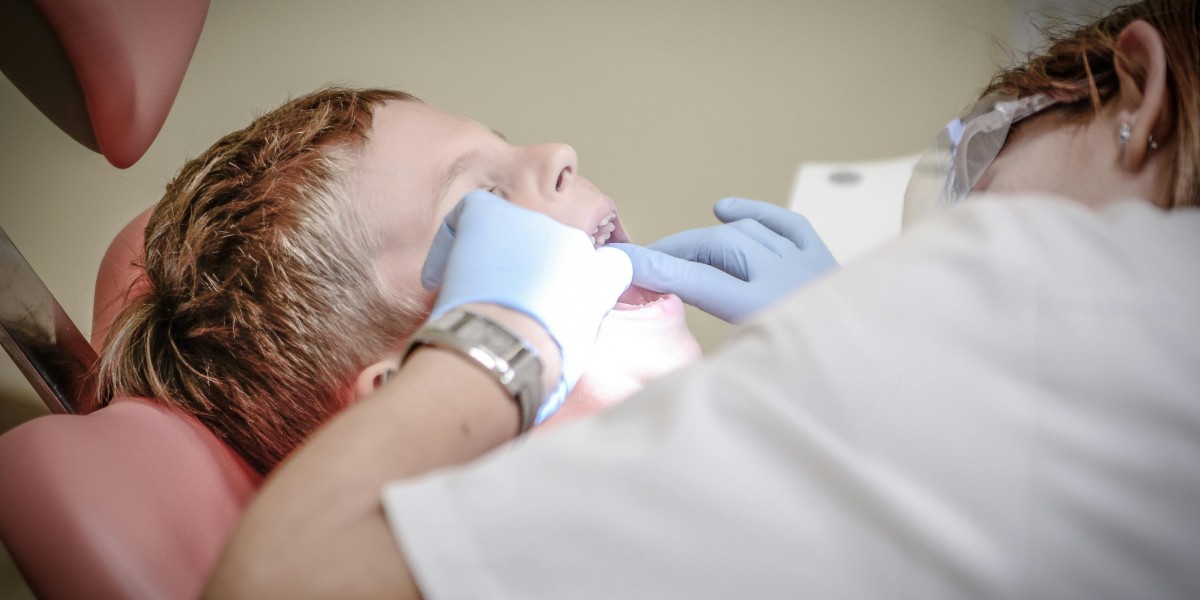Porcelain veneers are a popular cosmetic dentistry treatment to make your teeth look better. They are thin, custom-made covers made of tooth-colored porcelain that fit over the front of your teeth. Veneers can fix things like chips, gaps, and discoloration, giving you a beautiful, natural-looking smile. If you’re thinking about getting porcelain veneers, knowing the procedure can help you feel more confident and ready. This blog explains the steps involved in getting porcelain veneers in detail.
· Initial Consultation
The process of getting porcelain veneers starts with a visit to your dentist. During this visit, you’ll talk about what you want to achieve with your veneers, and your dentist will check your oral health to see if veneers are suitable for you.
· Evaluation: Your dentist will look at your teeth and gums to make sure they are healthy enough to support the veneers. They might take X-rays or photos to get a better view of your oral health and plan the treatment.
· Discussion: You’ll explain what you hope to fix with the veneers, such as chips, gaps, or changes in color and shape. It’s important to be clear about what you want so your dentist can understand your expectations.
· Treatment Plan: Your dentist will make a customized plan based on what you need and want. They will tell you how the process works, what results to expect, and discuss any risks or other options available.
· Preparation of Teeth
After deciding to get veneers, the next step is to prepare your teeth. This means removing a small amount of enamel from the front of your teeth to make space for the veneers and ensure they fit well.
· Enamel Removal: Your dentist will carefully remove a thin layer of enamel from the front of your teeth. This is needed to make room for the veneers so they can stick properly.
· Impressions: Once your teeth are prepared, your dentist will take impressions or digital scans of your teeth. These will be used to make custom veneers that fit perfectly and look natural.
· Temporary Veneers: While your permanent veneers are being made, your dentist might put temporary veneers on your teeth. These protect your teeth and give you a glimpse of your new smile.
· Fabrication of Veneers
After your impressions or digital scans are taken, they are sent to a dental lab where your custom porcelain veneers are made. This process usually takes a few weeks.
· Lab Work: Dental technicians will use your impressions to make veneers that match the shape, size, and color of your natural teeth. Porcelain is used because it looks like natural teeth and is strong.
· Color Matching: Your dentist will work with the lab to make sure the color of your veneers matches your other teeth, so they blend in well and look natural.
· Placement of Veneers
When your permanent veneers are ready, you’ll return to your dentist to have them placed. This step involves attaching the veneers to your prepared teeth.
· Fitting: Your dentist will first put the veneers on your teeth to check how they fit and make any needed adjustments. This makes sure the veneers are comfortable and fit well with your bite.
· Bonding: After checking the fit, your dentist will use a special glue to attach the veneers to your teeth. The glue is applied to both the veneer and your tooth, and then the veneer is put in place.
· Curing: A special light is used to harden the glue and hold the veneer in place. Your dentist will make sure the veneer is securely attached and remove any extra glue.
5. Post-Placement Care
After your veneers are placed, it's important to follow some care guidelines to keep them in good shape and ensure your smile stays beautiful.
· Initial Adjustment: You might feel some sensitivity or minor discomfort after getting your veneers. This is normal and should go away in a few days. Your dentist will give you tips on how to handle any discomfort.
· Oral Hygiene: Keep brushing and flossing your teeth as usual, including around the veneers. Good oral hygiene helps keep your teeth and gums healthy.
· Avoid Certain Foods: To protect your veneers, don’t bite into hard items or eat sticky foods that could damage them. Your dentist may suggest specific foods to avoid based on your situation.
· Regular Check-Ups: Make sure to visit your dentist regularly to check the condition of your veneers and keep your overall oral health in good shape.
Benefits of Porcelain Veneers
Porcelain veneers offer several benefits for people who want to improve their smile.
· Aesthetic Improvement: Veneers can fix various cosmetic dentistry problems like chipped or cracked teeth, gaps, and discoloration. They look natural and can make your smile look much better.
· Durability: Porcelain is a strong material that can handle everyday use. With good care, veneers can last for many years.
· Stain Resistance: Porcelain does not stain easily, so it’s easier to keep your smile bright and white compared to natural teeth.
Potential Risks and Considerations
Even though porcelain veneers are a popular and effective treatment, there are a few things to think about.
· Irreversible Procedure: Getting veneers involves removing a small amount of enamel from your teeth, which cannot be undone. Make sure you are sure about your decision before getting veneers.
· Cost: Veneers can be expensive, and dental insurance might not cover them. Talk to your dentist about the cost and consider financing options if you need them.
· Long-Term Maintenance: Although veneers are strong, they might need occasional adjustments or replacements. Regular dental check-ups will help keep them in good shape.
Conclusion
Getting porcelain veneers involves several key steps, from your first visit to the final placement. Knowing each step can help you feel more confident and ready for the treatment. Porcelain veneers are a great way to improve your smile and fix different cosmetic dentistry problems, offering a natural and long-lasting solution. If you’re thinking about getting veneers, talk to your dentist or visit Brush365 to find out if they are right for you and to go over the details of the procedure. If you’re looking for a dentist near me, they can help guide you through the process and answer any questions you might have.










